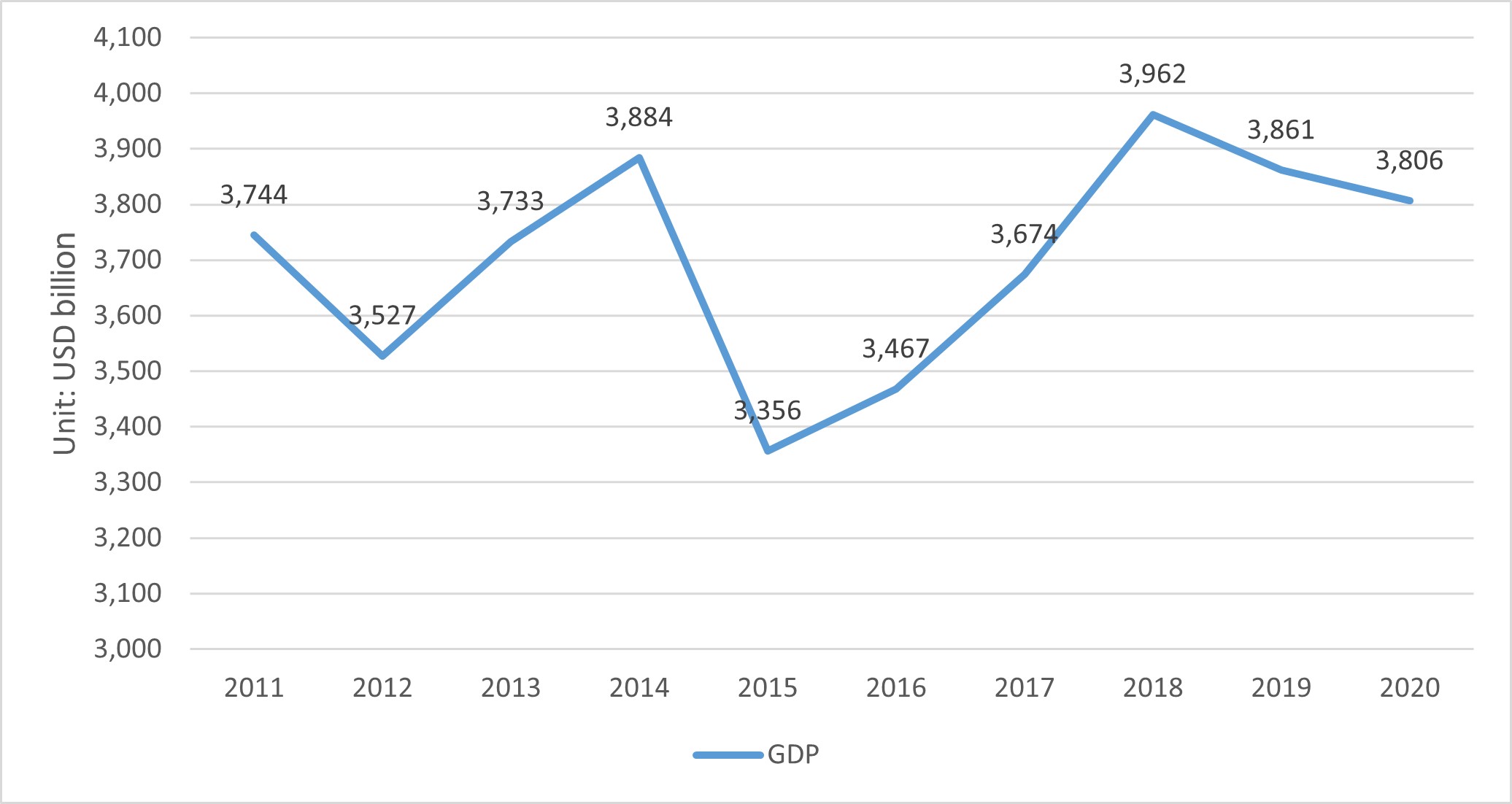German market size
German market size
Germany is the largest economy in Europe and the 4th largest in the world. According to the World Bank, in 2020, Germany's GDP reached USD 3.806 billion (only after the US with GDP of USD 20,937 billion, China with USD 14,723 billion, Japan with USD 5.065 billion). GDP also represents the purchasing power of an economy, and so it's not surprising that Germany is one of the most attractive markets for any exporters.
Figure: Germany’s GDP in the period of 2011-2020

Source: The World Bank, 2021
Over the past decade, Germany's GDP fluctuated unevenly and increased slightly from USD 3.744 billion in 2011 to USD 3.806 billion in 2020. In the past two years, the GDP of this economy decreased due to many reasons, including the impact of trade tensions between major economies (EU - US, US - China...), the influence from the UK's departure from the EU, and especially the outbreak of the COVID-19 pandemic since 2020. In the period of 2011-2020, the average annual growth rate of Germany's GDP was 1.39%, higher than that of the EU's GDP in the same period (0.72%).
Germany's economy is quite stable and has major macroeconomic indicators such as inflation rate, unemployment rate remain at low levels. During the period of 2011-2020, the average inflation rate of Germany was 1.64% and the average unemployment rate was 4.47%.
Germany is one of the developed countries with a relatively large population - about 83.2 million people – ranking 19th in the world and 2nd in Europe in 2020 (World Bank). Germany is also a high-income country in the world with GDP per capita reaching USD 45,724/year in 2020, ranking 16th in the world (Statisticstimes.com). As a result, German consumers have a high level of affordability for consumer goods.
Source: "Business Handbook: Exploiting the EVFTA to import and export goods between Vietnam and Germany" - Center for WTO and International Trade




